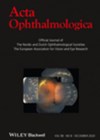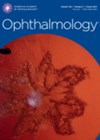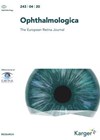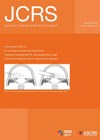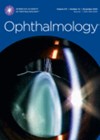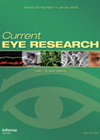
Journal Reviews archive for 2021
Relating metamorphopsia severity and OCT findings in advanced epiretinal membranes
The authors present the findings of a retrospective study to correlate metamorphopsia and ectopic inner foveal layers (EIFL) or ‘central bouquet’ abnormality (CBA) in patients with advanced stages of epiretinal membrane (ERM) following the new OCT‐based grading scheme as described...
Assessing failure of laser coagulation treatment for type 1 retinopathy of prematurity
The authors present the findings of a retrospective study to examine the cause of treatment failures in type 1 retinopathy of prematurity (ROP). They reviewed the medical charts of all infants with persistent disease post laser treatment at Uppsala University...
Tumour deposits following choroidal melanoma treatment
The authors present the unique case of retinoinvasive melanoma following treatment of choroidal melanoma with brachytherapy. Uveal melanoma, the commonest intraocular malignancy in adults, presents as a pigmented mass in the choroid, ciliary body, or iris. A 79-year-old Caucasian male...
Caffeine concentration in the vitreous after drinking coffee
Caffeine is known to penetrate many bodily fluids, including the vitreous. In this prospective study, investigators measured caffeine levels in vitreous samples from patients undergoing vitrectomy and epiretinal membrane peel. Patients were divided into habitual and non-habitual coffee drinkers. One...
Effect of blue-light filtering intraocular lenses on age-related macular degeneration
This is a retrospective cohort study evaluating whether blue-light filtering (BLF) intraocular lenses (IOL) offer prophylaxis for neovascular age-related macular degeneration (nAMD). The study included 11,397 eyes of 11,397 patients with a mean age of 75.4 ±8.3 years that underwent...
Restoration of colour perception in patients with retinitis pigmentosa
This is a case series testing the feasibility of using bioelectronic retinal prostheses to partially restore colour perception in seven patients with advanced retinitis pigmentosa. Bioelectronic retinal prostheses are able to bypass degenerated photoreceptors to directly stimulate the inner retinal...
Rebound phenomenon after IVT triamcinolone acetonide for macular oedema
In this retrospective study, the authors report the rebound phenomenon after intravitreal triamcinolone acetonide (IVTA) injection for macular oedema secondary to diabetic retinopathy (DR) and central (CRVO) or branch retinal vein occlusion (BRVO). The incidence of a rebound phenomenon was...
Endo-illumination-aided SB combined with IVT hyaluronate for RRD
The authors report a retrospective non-randomised control trial that evaluated the efficacy and safety of 25-gauge illumination-aided scleral buckling (SB) combined with hyaluronate injection for the treatment of rhegmatogenous retinal detachment (RRD). Forty-five cases were included in this study. Twenty-five...
Delayed angle closure in pseudophakia and repeated intravitreal therapy
The authors report two cases of acute angle closure many years after uneventful cataract surgery and posterior chamber intraocular lens (IOL) implantation. Both patients had neovascular age-related macular degeneration (AMD) and received regular intravitreal injections (24 and 25 injections in...
Customised corneal crosslinking with supplemental oxygen
In this prospective interventional case series, the authors investigate using supplemental oxygen delivery during epithelium-on corneal crosslinking (CXL) with specially designed oxygen delivery goggles. Twenty-seven eyes of 24 patients underwent epi-on CXL with Riboflavin and Ultraviolet-A irradiation. At six months...
How does low-concentration atropine reduce progression of myopia?
This is a double-blind, randomised, placebo-controlled trial evaluating the effects of low-concentration atropine (0.05%, 0.025%, 0.01%) on ocular biometrics of myopic children. The aim is to determine what aspect of ocular biometrics low-concentration atropine influenced in reducing the progression of...
Topical nonsteroidal ant-inflammatory drugs (NSAIDs) in patients undergoing cataract surgery
Inflammation is a major risk factor for the development of cystoid macular oedema (CMO) after cataract surgery, leading to breakdown of the blood-retina barrier. There is a correlation between severity of CMO and level of postoperative inflammation. Laser flare meter...

